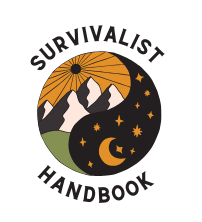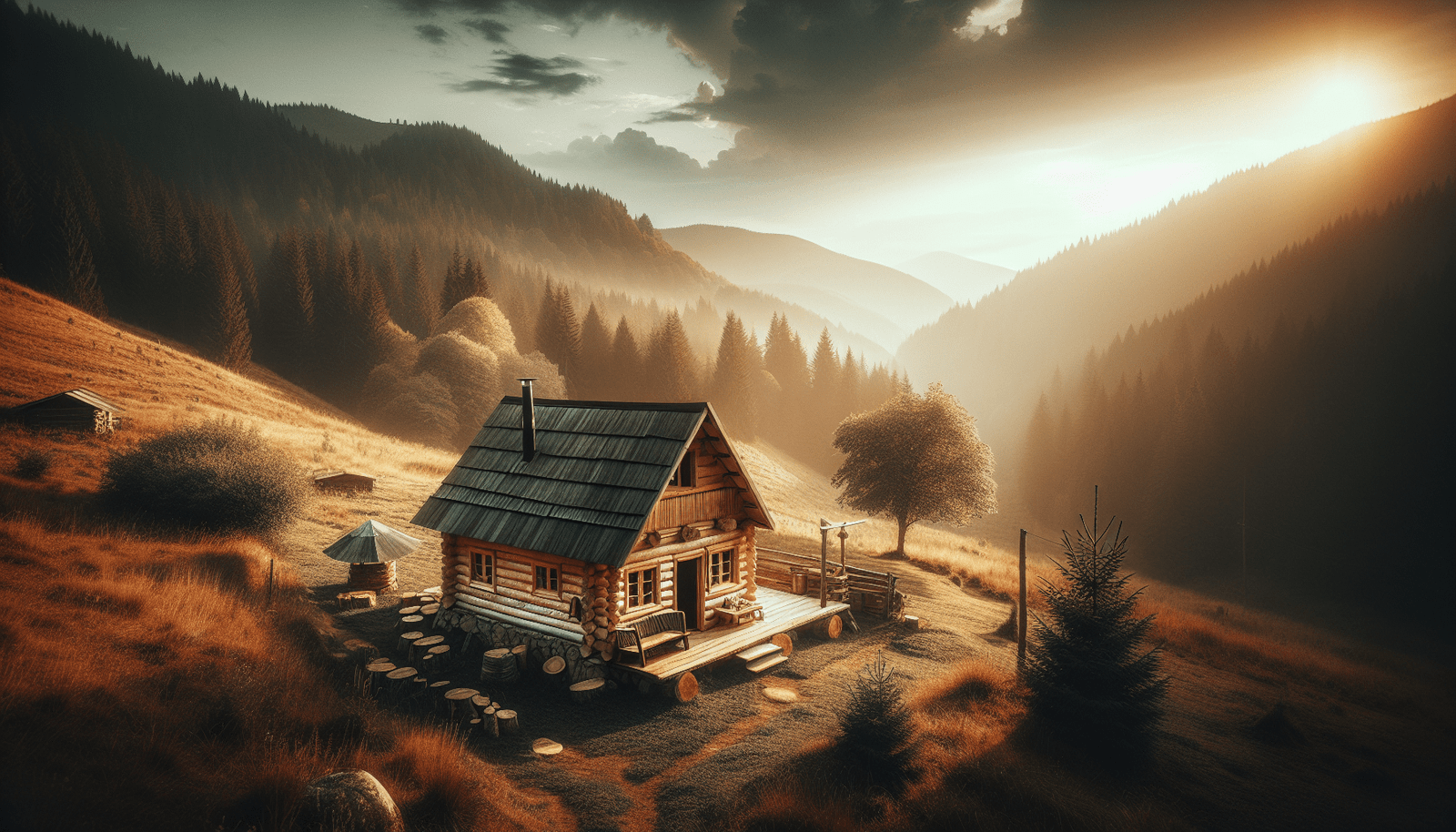Imagine embarking on an incredible adventure, where you and your family live off the grid, self-sufficient and in perfect harmony with nature. Your backyard turns into a bountiful garden, providing you with fresh produce year-round. You become an expert in identifying wild plants, using them for nourishment while avoiding dangerous imposters. You learn how to care for your pets during emergencies, and even build your own water filter and solar power system. But it’s not just about survival skills; your younger ones are involved too, learning to build shelters and make fire without matches. From wilderness navigation to emergency medical knowledge, every step you take towards self-sufficiency equips you with invaluable skills. It’s not about doomsday preparation, it’s about embracing self-reliance and connecting with nature. Are you ready to embark on your own off-grid adventure? Get started by discovering the diverse topics in “Off-Grid Living 101: Unleash Your Inner Homesteader in 7 Simple Steps.” Believe me, the journey is truly empowering!
Step 1: Establishing a Self-Sufficient Garden
Selecting the ideal location for your garden
Creating a self-sufficient garden is an excellent way to ensure a steady supply of fresh produce. When selecting the ideal location for your garden, consider factors such as sunlight, access to water, and soil quality. Choose a spot with at least 6 to 8 hours of sunlight per day to provide optimal conditions for plant growth. Additionally, ensure that the area has access to a water source or consider installing a rainwater collection system. Lastly, test your soil to determine its composition and pH level, as certain plants thrive in specific conditions. By carefully selecting the right location for your garden, you set yourself up for success in growing a bountiful harvest.
Preparing the soil for planting
Preparing the soil is a vital step in establishing a self-sufficient garden. Start by removing any weeds, rocks, or debris from the area. Loosen the soil with a gardening fork or tiller to improve its texture and drainage. Adding compost or organic matter can enrich the soil with nutrients and improve its fertility. It’s also essential to ensure that the soil is properly balanced in terms of pH levels. Testing kits are available at gardening stores to help you determine the pH level of your soil. Adjust the pH if necessary by adding soil amendments. By properly preparing the soil, you create an optimal environment for your plants to thrive.
Choosing the right plants for your climate
To achieve self-sufficiency in your garden, it’s important to choose plants that are suited to your climate. Research the USDA Plant Hardiness Zone map to determine the growing conditions specific to your region. This will help you select plants that can withstand the temperatures and weather patterns in your area. Consider growing a mix of vegetables, fruits, and herbs that are well-suited to your zone and will provide a variety of nutritious choices for your meals. Additionally, look for plant varieties that are resistant to common pests and diseases in your region. Choosing the right plants for your climate will increase your chances of success in growing a productive garden.
Caring for your garden sustainably
Caring for your garden sustainably not only benefits the environment but also helps to create a harmonious ecosystem in your backyard. Incorporate organic gardening practices, such as using natural fertilizers and compost, to nourish your plants without harmful chemicals. Practice water conservation by utilizing mulch, which helps retain moisture in the soil, and by watering your garden during the early morning or late evening to prevent evaporation. Introducing beneficial insects, like ladybugs and praying mantises, can help control pests naturally. Regularly monitor your garden for signs of disease or nutrient deficiencies, and address them promptly to maintain a healthy and thriving garden.
Harvesting and preserving your produce
Once your garden starts yielding an abundance of fresh produce, it’s time to reap the rewards of your hard work. Harvest your fruits and vegetables at their peak of ripeness to enjoy maximum flavor and nutritional value. Use clean gardening tools to avoid introducing contaminants and to prevent the spread of diseases. For longer-term preservation, consider canning, freezing, or dehydrating your produce. By learning different preservation techniques, you can enjoy your homegrown bounty even during the off-season. Don’t forget to share your harvest with family, friends, and neighbors, as fostering a sense of community is an integral part of self-sufficient living.

Step 2: Wild Plant Identification and Foraging
Understanding the importance of wild plant identification
When embracing self-sufficiency, understanding wild plant identification is crucial for foraging safely and enjoying the benefits of nature’s bounty. By learning to identify edible plants, you can supplement your diet and even add exciting flavors to your meals. However, it’s equally important to be able to differentiate between edible plants and toxic or poisonous ones. Proper identification ensures that you avoid any potential health risks and instead reap the benefits of wild plant foraging in a safe and responsible manner.
Identifying edible wild plants
From dandelions to cattails, the world is teeming with edible wild plants that can be a valuable addition to your self-sufficient lifestyle. Educate yourself about the edible plants that are native to your region and the specific conditions in which they thrive. Invest in field guides or take classes led by experienced foragers to refine your knowledge. Take time to observe the plants in their natural habitat to familiarize yourself with their characteristics. Remember, it’s crucial to positively identify edible plants before including them in your meals. When in doubt, consult with an expert or refrain from consumption.
Avoiding toxic and poisonous plants
While the wilderness holds many edible treasures, it’s equally important to be aware of potential dangers. Some plants may look similar to their edible counterparts but can be toxic or poisonous. Familiarize yourself with the characteristics of poisonous plants in your area to avoid accidental consumption. Look for warning signs such as brightly colored berries, milky sap, or distinct leaf patterns. When venturing into the wild for foraging, approach the activity with caution and focus on positively identifying plants to prevent any harmful encounters.
Safely foraging for wild plants
foraging for wild plants can be a rewarding and enjoyable activity, but it’s essential to do so safely. Follow these guidelines to ensure a positive and responsible foraging experience:
-
Obtain necessary permits: Some areas may require permits for foraging, so be sure to research and obtain any necessary permissions before setting out.
-
Respect the environment: Practice leave-no-trace principles by not disturbing the natural habitat or taking more than you need. Avoid foraging in protected areas or places where plants may be endangered.
-
Use proper harvesting techniques: Harvest responsibly by taking only what you need and being mindful of the plant’s ability to regenerate. Cut plants above the ground to ensure their survival.
-
Wash and prepare wild plants: Before consuming wild plants, thoroughly wash them to remove dirt and any potential contaminants. Also, be sure to correctly prepare them, as some plants may require cooking to remove toxins or improve flavor.
By following these guidelines, you can engage in the rewarding experience of safely foraging for wild plants while respecting the environment and preserving its natural beauty.
Incorporating wild plants into your meals
Once you have successfully foraged and identified edible wild plants, it’s time to bring them into your culinary creations. Wild plants can add unique flavors and textures to your meals, elevating the dining experience to a whole new level. Experiment with incorporating wild greens into salads, adding edible flowers as a garnish, or using wild berries in jams and desserts. Remember to use wild plants in moderation and to diversify your foraged varieties to avoid putting excessive pressure on specific plant populations. Embrace the art of wild plant foraging and let your creativity flourish in the kitchen.


